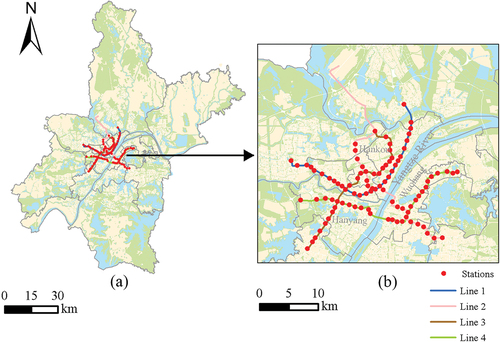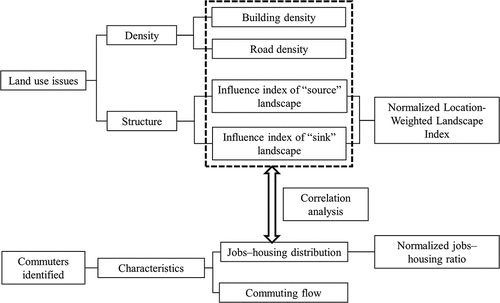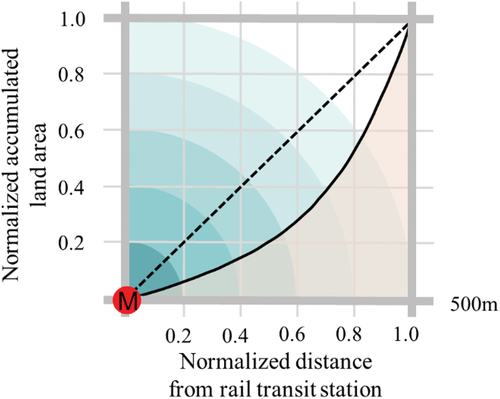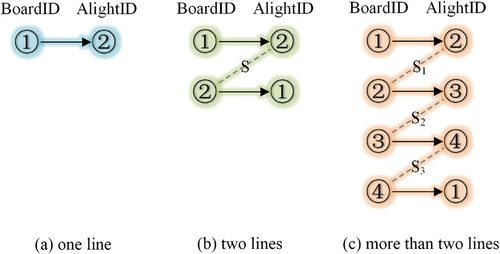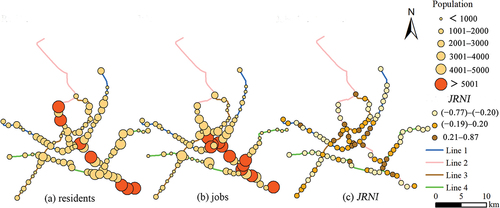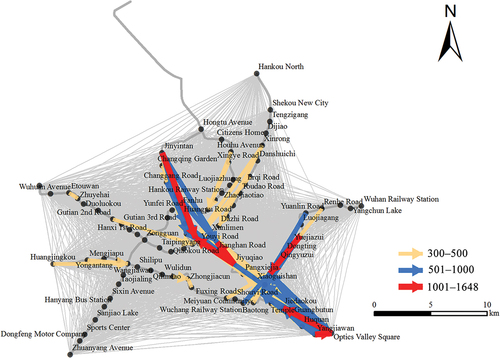Figures & data
Table 1. Statistics for the land use indices.
Table 2. Numbers of stations according to residents and jobs around the station.
Table 3. Pearson correlation coefficients between residents, jobs, and land use indices at rail transit stations.
Figure 7. Residents, jobs and building density of four lines (station names are in Appendix A).
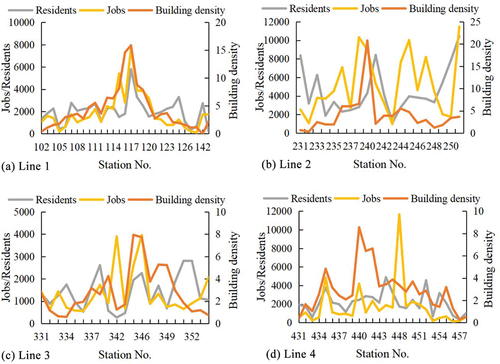
Table 4. Land use indices and JRNI of six vital stations.
Data availability statement
The data that support the findings of this study are available from the Wuhan Land Use and Urban Spatial Planning Research Center, https://doi.org/10.1080/10095020.2022.2100286 with permission or from the corresponding author [email protected] upon reasonable request.

